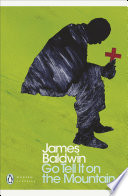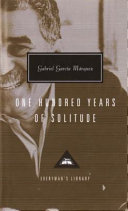
"Go Tell it on the Mountain" Summary
fiction | 272 pages | Published in 2001
Estimated read time: 5 min read
One Sentence Summary
A young man in 1930s Harlem struggles with family, religion, and his own identity.
Table of Contents
Introduction
"Go Tell it on the Mountain" by James Baldwin is a powerful semi-autobiographical novel that delves into the African-American experience in 1930s Harlem. The book takes readers on a journey through the lives of the Grimes family, exploring themes of faith, identity, and the search for belonging. With its rich prose and complex characters, the novel offers a profound exploration of the struggles and triumphs of the human spirit.
Brief Synopsis
Plot Overview
"Go Tell it on the Mountain" unfolds over the course of a single day, primarily focusing on the life of John Grimes, a young African-American boy on the cusp of adolescence. The story also delves into the lives of other family members, shedding light on their experiences and struggles.
Setting
The novel is set in 1930s Harlem, a vibrant and dynamic neighborhood in New York City. Against the backdrop of the Harlem Renaissance, the story captures the cultural and social milieu of the time, exploring the complexities of African-American life in a rapidly changing urban landscape.
Main Characters
The novel features several key characters who play pivotal roles in the narrative:
| Character | Description |
|---|---|
| John Grimes | A young African-American boy grappling with questions of faith and identity. |
| Elizabeth Grimes | John's mother, a deeply religious woman struggling with her own past. |
| Gabriel Grimes | John's stepfather, a charismatic church preacher with a troubled past. |
| Florence | Gabriel's sister, who carries the weight of her own secrets and sorrows. |
Summary of Different Story Points over Chapters
Chapter 1
The novel opens with an exploration of John's internal struggles as he grapples with feelings of isolation and a sense of alienation from his family. The narrative provides insights into the complexities of his relationships and his yearning for a sense of belonging.
Chapter 2
As the story unfolds, the focus shifts to Elizabeth, John's mother. Her past experiences and the challenges she has faced come to the forefront, shedding light on the forces that have shaped her and the family dynamics within the Grimes household.
Chapter 3
The narrative delves into Gabriel's past, revealing his tumultuous journey and the choices he has made. As his story unfolds, readers gain a deeper understanding of the complexities of his character and the impact of his actions on those around him.
Chapter 4
Florence's story takes center stage in this chapter, offering a poignant exploration of her struggles and the burdens she carries. The narrative provides a window into her inner world, unraveling the emotional complexities that define her character.
Main Events
The novel is punctuated by several pivotal events that shape the trajectory of the narrative:
- John's internal struggles and quest for identity.
- Elizabeth's reflections on her past and the challenges she has faced in her life.
- Gabriel's tumultuous journey and the impact of his actions on the family.
- Florence's emotional turmoil and the weight of her own secrets.
Themes and Insights
Themes
- Faith and Religion: The novel delves deeply into the themes of faith and religion, exploring the role of spirituality in the lives of the characters and its influence on their actions and decisions.
- Identity and Belonging: The quest for identity and a sense of belonging is a central theme, as the characters grapple with questions of self-discovery and acceptance.
- Family and Relationships: The complexities of family dynamics and relationships are explored, shedding light on the bonds that tie the characters together and the conflicts that threaten to tear them apart.
Insights
The novel offers profound insights into the human experience, delving into the complexities of the human spirit and the resilience of the characters in the face of adversity. Through rich prose and vivid storytelling, the narrative provides a window into the inner worlds of the characters, offering a nuanced exploration of their struggles and triumphs.
Reader's Takeaway
"Go Tell it on the Mountain" is a poignant and evocative novel that offers readers a powerful exploration of the African-American experience. Through its richly drawn characters and vivid portrayal of 1930s Harlem, the book invites readers to reflect on the universal themes of faith, identity, and the search for belonging. With its compelling narrative and profound insights, the novel leaves a lasting impression, offering readers a deeply moving and thought-provoking literary experience.
Conclusion
In conclusion, "Go Tell it on the Mountain" stands as a timeless work of literature that continues to resonate with readers, offering a compelling portrayal of the human experience. James Baldwin's masterful storytelling and rich character development weave together a narrative that captures the complexities of faith, identity, and family, making it a must-read for those seeking a profound exploration of the African-American experience.
Go Tell it on the Mountain FAQ
What is 'Go Tell it on the Mountain' about?
Is 'Go Tell it on the Mountain' based on James Baldwin's life?
What themes are explored in 'Go Tell it on the Mountain'?
Who would enjoy reading 'Go Tell it on the Mountain'?




